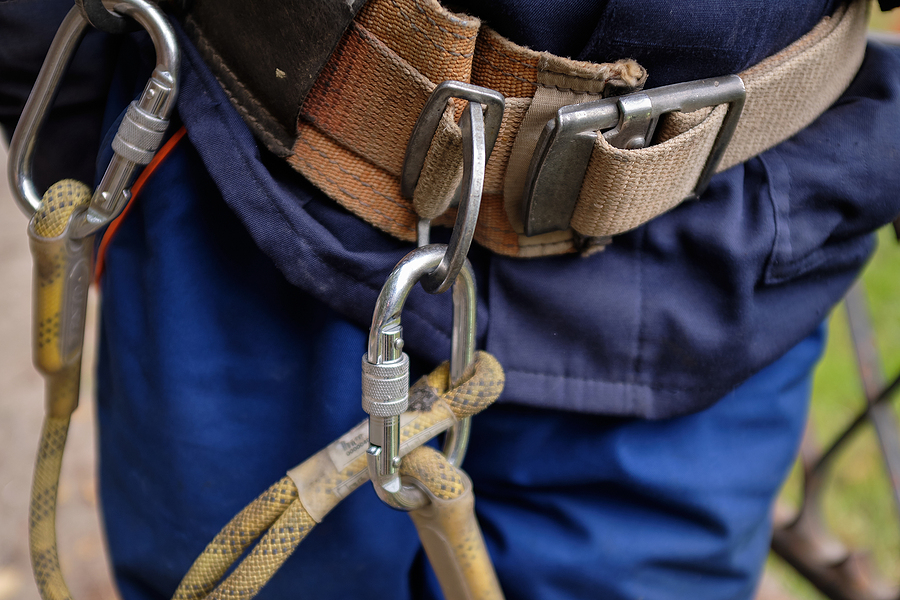New Mexico Construction Company Employees Need Fall Prevention Training—Here’s Why

Like it or not, workplace falls are all too common these days and they come with more than just an economic cost.
You have a responsibility for safety within your workplace, and you need to be paying attention to ways you can protect your workforce.
Why is Fall Safety Important?
Fall incidents can have many causes, including:
- Misused fall protection
- Incorrect ladder use
- Wall openings
- Floor holes
- Slippery, cluttered, or unstable walk spaces
- Unprotected edges
Fall injuries are by no means inevitable, in fact, quite the opposite. They can be prevented quite easily by planning your workspaces according to safety aspects.
Falls are one of the most common causes of serious work-related injuries. By planning, prioritizing worker safety and investing in the right personal protective equipment (PPE) and training, you can increase your confidence that you have done everything within your power to reduce these incidents.
Remember that a fall injury affects the entire workforce, not just the victim. When a worker experiences a fall, the rest of the workforce are unsettled and feel unsafe – especially if the fall could have been prevented.
Employer Responsibility
You are required by law as an employer to not only develop safety awareness strategies, but also to take preventative measures to avoid falls.
For example, in the construction industry OSHA guidelines require employers to be legally responsible for determining workplace safety. The employer must also provide appropriate fall protection practices and equipment when necessary.
This not only applies to the construction industry as OSHA also has extensive guidelines for other industries. These address common fall issues such as working surfaces, escalators, elevators, powered platforms, staircases, and ladders.
Things to Consider Before Creating a Fall Prevention System
When you are considering a fall arrest system, you must first investigate whether you require fall protection. For this, OSHA enforces the following guidelines:
- Regulation 1926, Subpart M (Construction)
- Regulation 1910, Subparts D and F (General Industry)
There are strict requirements for when companies must supply fall protection:
- Construction – 6 feet
- Shipyards – 5 feet
- Longshoring – 8 feet
- General Industry – 4 feet
However, if you happen to be working above dangerous machinery, you must provide fall protection no matter the height.
Secondly, you must assess whether you should be preventing a fall hazard or eliminating it. Obviously eliminating a fall hazard is the safest route, however sometimes elimination is not an option.
After this, you need to establish the appropriate fall protection measures for the situation. These could include fall restrain systems, guardrails, scaffolds, barriers, handrails and personal fall protection equipment.
Of course, these safety measures are of no use unless your workers are trained how to use them correctly. Also, regular checks and audits need to be undertaken to ensure employees are using the equipment properly.
Workplace Safety and Fall Protection
Workplace environmental, safety and health protocols should always include fall protection measures. This is primarily because slips and falls are very common injuries that occur in the workplace. Ensuring workplaces are safe for all employees is paramount.
Fall protection safety equipment doesn’t necessarily have to be complicated. A yellow strap near the end of a ladder, or a red strap at the top that helps to stabilize a straight or extendable ladder when used against a pole or other vertical surface is quite sufficient.
There is other equipment that workers can attach to their bodies to prevent falls, like self-retracting lifelines, a safety harness and other personal equipment.
There are also installed systems that are more elaborate. For example, tether tracks, anchors, guard rails, rigid rails, portable fall protection structures.
There are numerous temporary safety and access structures, including ramps, rails and walkways designed to allow a worker to pass safely from one area to another and avoid walking over or around parts being built.
The OSHA recommendation is that site foremen and employers ensure that any floor hole which could be inadvertently walked into is guarded using a railing and toe board, or floor hole cover. It is also recommended that a guard rail and toe board are installed around any open sided, elevated platform, irrespective of its height. Other suggestions for safety include hand railings, safety nets and stair railings where applicable.
Taking Charge of Fall Safety
Effective fall safety practices are mostly a matter of preparing correctly. You know what is required, you just need to implement it strategically.
A visit to the Safety Counselling blog will give you more best practices and workplace safety tips. Rest assured we are aware of the challenges you face to keep your workers safe. We have developed effective safety tools and resources that can adapt to your work situation. It’s in your best interests to know everything you need to know about fall safety, and that’s where we can help.
Taking Charge of Fall Safety
Fall safety is mostly a matter of preparation. You know what fall prevention requires—you just need to do your homework and implement it strategically.
We know the challenges that you face in keeping your workers safe. That’s why we develop safety tools and resources that can adapt alongside you. For more workplace safety tips and best practices, visit the Safety Counselling Blog.
